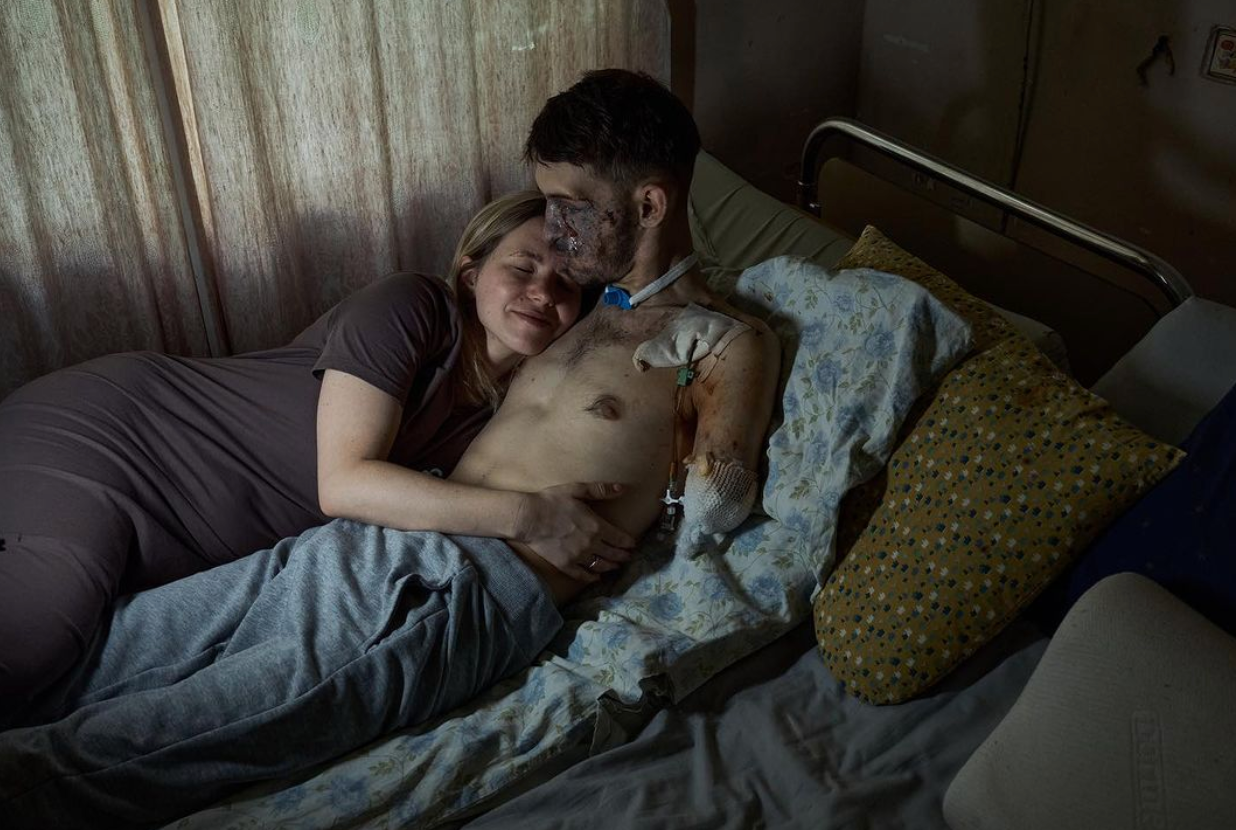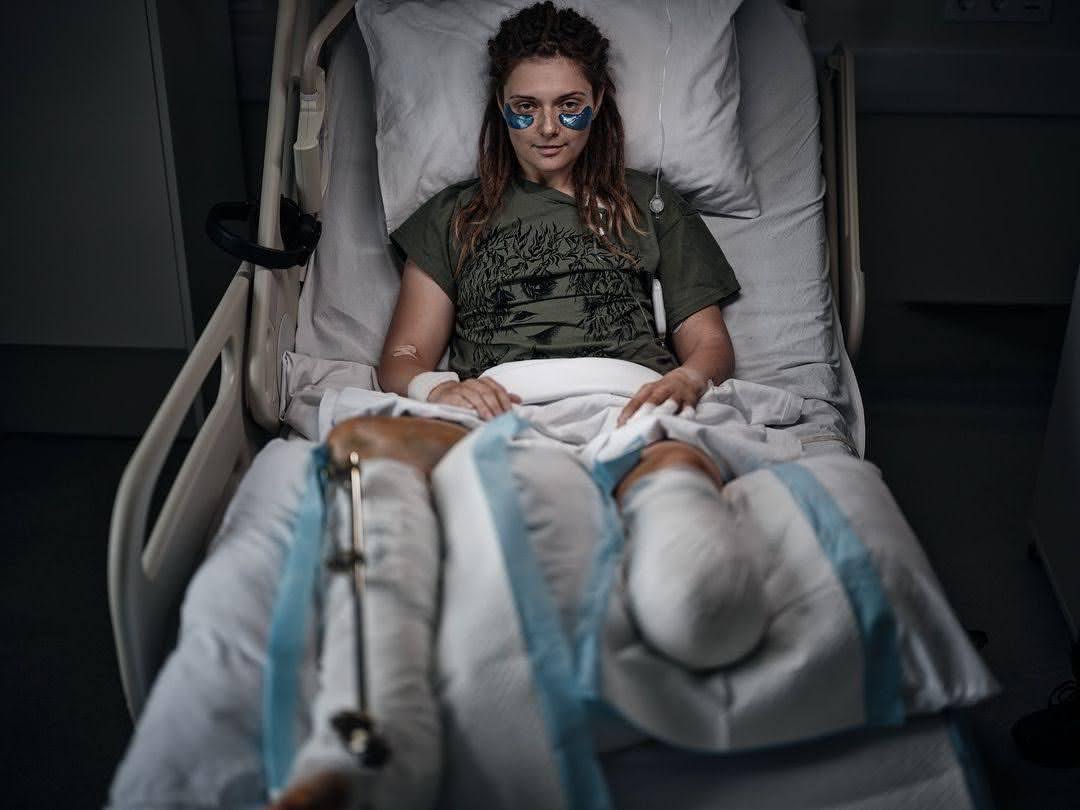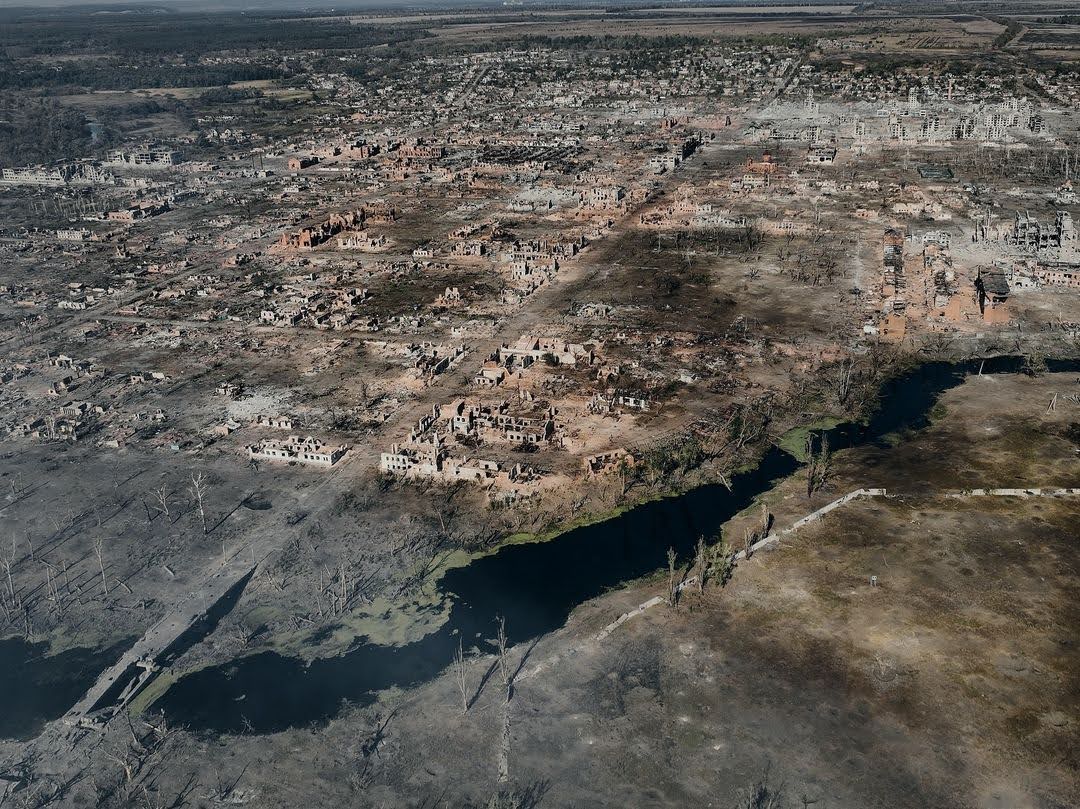It is the edge of winter in Ukraine, and the first cold days have come. In a country whose energy infrastructure has been slowly bombed into dust by Russia over the course of this war, that seasonal fact is especially ominous this winter. Father Frost will inevitably play a role in just how well Ukraine can hold up against the invading force’s heft in manpower, industrial output, determined brutality, and fire power.
I’m in a basement in Kyiv, having just returned from the frontline eastern city of Kharkiv. Psychologists, neuro-scientists, battlefront combat medics, diplomats, army commanders, and chief medical officers attached to combat formations have gathered to consider a phenomenon which not only menaces Ukraine’s survival as a functional democracy, but also her capacity to recover and rebuild when peace finally returns to this battered land. This is the phenomenon of what was once called “shell shock” which is produced by the sheer scale of Russian firepower.
Most of that firepower comes in the form of Russia’s dominance along the 1200km frontlines of somewhere between 5 to 10 times the number of incoming shells for every one that Ukraine forces fire back. The admixture of North Korean shells, Iranian drones, Russian missiles (supported by Chinese chips), and Russian glide bombs, means that Ukrainian troops are subjected to the kinds of blast waves probably not endured by troops so consistently over such a stretch of time since WWI, if ever.
Whatever the terror experienced by Ukraine’s civilians, it’s as nothing compared with the physical and psychological punishment exacted on Ukrainian troops. When they can engage the enemy, Ukrainian troops are immersed in almost hand-to-hand trench warfare. Much of the time, they are huddling in basements and trenches just trying to survive the variety of armaments striking their positions, not least of which are the 2,000-pound Russian “glide bombs,” released at safe distance by the Kremlin’s fighter planes.
A 2,000-pound laser-guided glide bomb releases a shock wave equivalent to tens of thousands of PSIs, or pounds per square inch (the bottom of the Mariana trench experiences around 16,000 PSIs, and a hydraulic steel crusher exerts around 50,000 PSIs). Within single digit metres of such a bomb explosion people are simply pulverised. Within dozens of metres, a supersonic shock wave creates a sudden intense pressure beyond the resistance envelope of human soft tissue, such as the lungs or brain (we are mostly water). These shocks inflict molecular and neuronal damage invisible to an MRI scan.
Beyond immediate proximity and up to scores of metres, the blast wind throws people, shrapnel, and thermal particles. Windows might shatter kilometers away. The overpressure and heat collapses lungs, creates haemorrhaging, burns flesh, and damages organ tissue (eardrums can withstand overpressures of 5-15 psi). Aside from causing structural damage to buildings and wiping out defensive positions in a single blow, these bombs, kill, maim, and shock and daze anybody who survives relatively uninjured. If not killed outright, dozens of fighters are rendered useless.

Andrii, a wounded serviceman, and his wife Alina. Photographed by Kostiantyn Liberov & Vlada Liberova
This is the reason that the small philanthropic Fund that I am leading, Planet Humana, has made a key investment into the recovery of troops and civilians from what is more correctly now called post-concussion syndrome. At the Forest Glades centre on the outskirts of Kyiv, the caseworkers we fund treat and manage thousands of survivors of shell shock, as well as soldiers and civilians released from Russian captivity. Many of these former captives have endured electric shock torture and blunt instrument beatings to the head which have caused Mild Traumatic Brain Injuries (mTBI’s), often leaving them with injuries like that of concussed troops.
Even as an ex-UN official who spent his career at the coal face of complex global crises and issues, I’m reminded of the difference it makes when I’m boots-on-the-ground. Here, I look people in the eyes who are often risking their lives. Here, I see our dollars multiplying impact through volunteers and grassroots organisations, of which we are funding a dozen or so. Apart from backing a wide variety of life-saving initiatives along front line areas, we are investing in the rehabilitation of troops and civilians because these are the very people not only facing down Russia’s aggression, but who will also have to rebuild Ukraine brick-by-brick once war is done.
The troop rotation typically available to US or Australian forces is a fantasy in a country with Ukraine’s ‘manpower’ shortage (there are also around 5,000 women serving in forward combat positions). Most Ukrainian troops have left the frontlines for just a few weeks of leave over the past close-to thousand days of war. According to Anastasia Pugachova, a case worker who manages former captives, until Forest Glades advocated for change in armed forces’ policy this summer, 100 per cent of shell-shocked troops were returned to the fray. Now, given a choice, around 80 per cent of those treated and rested for a few weeks choose to return to their units.

Ukrainian Ada is a UAV operator of the Armed Forces of Ukraine. She drove over an enemy anti-tank mine in September 2024, losing her left leg. Photo credit: Konstantyn & Vlada Liberov.
In terms of pure amplification of impact with relatively modest sums, I’ve written elsewhere about the multiplying power of Ukraine’s volunteers. The Forest Glades caseworkers we fund will handle 4-5,000 shell shock and torture cases per year. The small rapid response volunteer supply units we support respond to specific material requests from frontline areas, reaching thousands of people, which steadies the lines. The volunteer mobile combat medic trainers we back will train perhaps close to a thousand medics, firemen, and volunteers in a year, who will all pass on that knowledge of proper tourniquet and wound-packing techniques to thousands of others, which in turn will save thousands of lives. The volunteer kitchen we fund has produced well over a million meals since the conflict began.
Moving forward, it is clear that Forest Glades is in expert hands. The basement conference is being run by Forest Glades’ director Dr Ksenia Vosnitsayna, a neurologist at the cutting edge of this country’s treatment of battlefield brain injury. She speaks tirelessly of the “hidden” nature of mTBI’s. The director of the US Department of Defence’s War Fighter Brain Injury policy is also patched in. DoD research ramped up in the 2000s, as concussive blast injuries trebled in US forces. Yet in a country still with a rudimentary regard for psychological disability, Ukraine is in the unenviable position of finding that the DoD’s protocols can only partially apply to Ukraine’s experience. Instead, Ukraine will be feeding to the world “lessons learned” on the terrible impact of modern weapons on the human brain.
———————————————————
 Gordon Weiss heads the Planet Humana group. He has worked with the UN, the OSCE, and in government service and private enterprise for three decades, focused on multi-faceted peacekeeping, political, and humanitarian crises in some of the world’s most fragile zones. He was boots-on-the-ground in dozens of conflict countries, including first response operations. He is the author of “The Cage: The Fight for Sri Lanka and the Last Days of the Tamil Tigers.”
Gordon Weiss heads the Planet Humana group. He has worked with the UN, the OSCE, and in government service and private enterprise for three decades, focused on multi-faceted peacekeeping, political, and humanitarian crises in some of the world’s most fragile zones. He was boots-on-the-ground in dozens of conflict countries, including first response operations. He is the author of “The Cage: The Fight for Sri Lanka and the Last Days of the Tamil Tigers.”
Planet Humana is a new, small, low-cost philanthropy backed by High Net Worth individuals, founded to combine robust advocacy along with the active funding of grassroots groups responding to critical issues. Learn more about Planet Humana here: https://www.planethumana.org/
Feature image details: “Bombed to dust: The city of Vovchansk in the Kharkiv”. Credit: Kostiantyn and Vlada Liberov.
